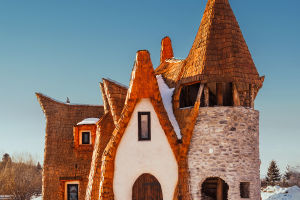When it comes to extremely cold weather, the coldest places on Earth are often found at the top of high mountains or in the polar regions. However, the specific locations and temperature levels can vary greatly depending on the hemisphere and region.
For example, while the Arctic Circle or North Pole may seem like the obvious contenders for the coldest place in Asia, the reality is that the title actually belongs to Siberia in the eastern part of Oymyakon.
With a latitude of 63°16.2′N, this area is known as the "Cold Pole" in the Northern Hemisphere and holds the official record for the lowest temperature ever recorded in a permanently inhabited settlement, with a frigid -67.7℃ registered in February 1885. In fact, this record was later broken in January 1964, when the temperature plunged even lower to -71℃.
But while Oymyakon may be the coldest inhabited place on Earth, it is not the absolute coldest. That honor belongs to Antarctica, the southernmost continent and the fifth-largest in the world. Due to its unique location and weather patterns, Antarctica is by far the coldest place on the planet.
The average temperature there is a bone-chilling -25℃, which is a staggering 40°C lower than the average temperature of the entire Earth. Inland plateau areas of Antarctica are even colder, with average temperatures hovering around -52°C.
In many parts of the continent, the snow never melts, and water freezes instantly upon contact with the ground. This makes it an incredibly challenging environment for any living creature, let alone human beings.
Despite these extreme conditions, a small number of people choose to live in the coldest regions of the world. In Oymyakon, for example, there are several hundred residents who have adapted to the harsh climate over generations.
They typically live in houses with thick walls and small, insulated windows to keep the cold out and rely on traditional heating methods such as wood-burning stoves.
For transportation, many residents use snowmobiles or reindeer sleds, as regular vehicles can struggle to operate in such extreme temperatures. Despite the challenges, however, many residents of Oymyakon take pride in their community and culture and are happy to call the coldest inhabited place on Earth their home.
In Antarctica, on the other hand, there are no permanent settlements, as the continent is primarily used for scientific research and exploration. During the summer months, when temperatures are comparatively mild (around -10°C), researchers from around the world come to Antarctica to conduct experiments and collect data on everything from climate change to astronomy.
However, during the long, dark winter months, when temperatures can drop to -80°C or lower, all but a handful of scientists and support staff are evacuated, leaving behind a barren, frozen wasteland.
Living in such extremely cold climates requires a combination of preparation, adaptation, and sheer grit. In addition to specialized housing and transportation, residents must also take care to dress warmly and avoid prolonged exposure to the elements.
Clothing must be made from materials that can retain heat even in sub-zero temperatures, such as wool, down, or synthetic insulation.
Specialized footwear with thick soles and insulated linings are also a must, as frostbite and hypothermia are constant dangers in such extreme conditions. Ultimately, though, it is the people who choose to call these coldest places on Earth their home who demonstrate the greatest resilience and perseverance in the face of such harsh and unforgiving weather.


